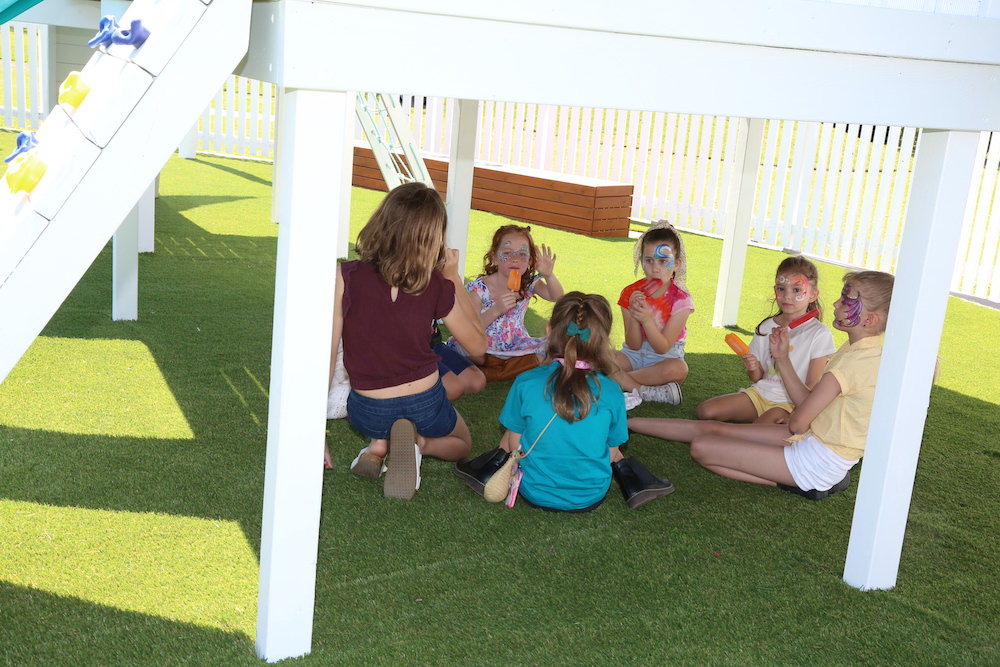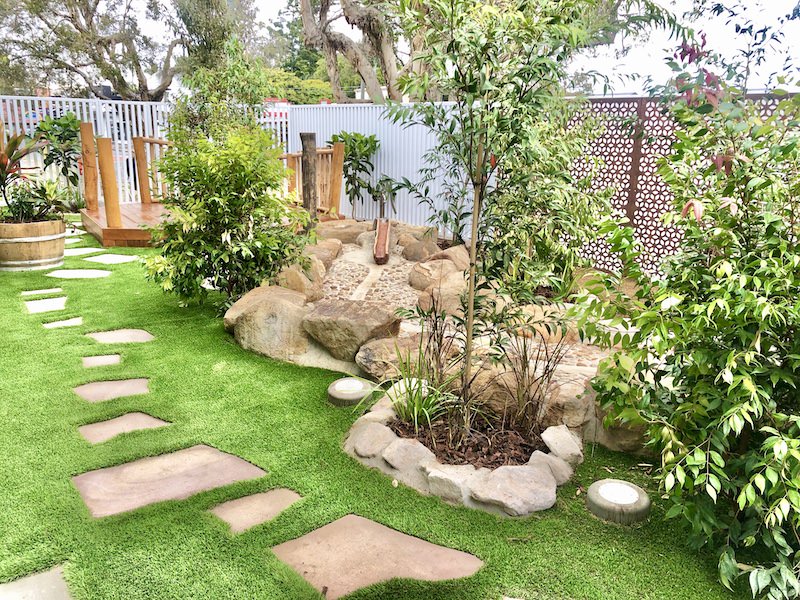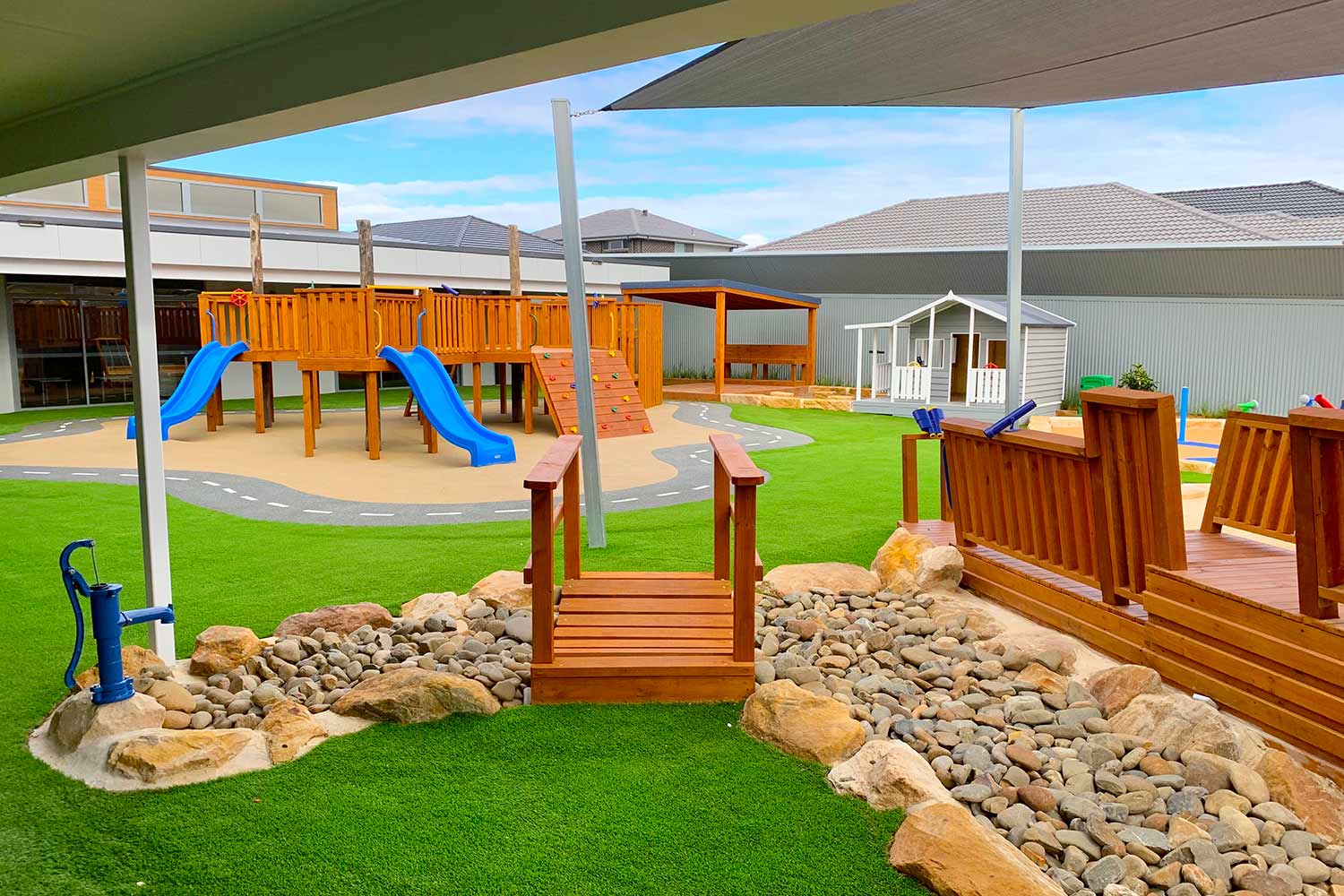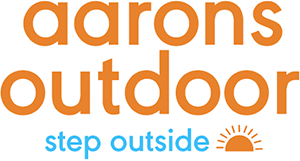Designing genuinely developmental playgrounds for maximising preschool growth presents a profoundly consequential challenge. More than entertaining spaces for playtime, early childhood playgrounds are shaped as nurturing incubators cultivating foundational cognitive, creative, and social competencies.
The stakes ride high for crafting adequately enriching environments during these most critical years when young brains rapidly forge high-order neural connections through sensory exploration. Unfortunately, many playgrounds still incorporate dated static equipment centred primarily around physicality. Failures furnishing multi-faceted stimulus during this fertile window risk lifelong impacts on holistic skills formation.
Thankfully, advancing insights into early childhood need to help guide the creation of cutting-edge playgrounds prioritising open-ended play. When designed intentionally through the lens of developmental science and child psychology, playscapes directly elevate every domain, from conceptual thinking to emotional growth. The essence lies in optimising equipment arrangement, backdrop diversity and integrated activity pockets. Done effectively, thoughtfully engineered playgrounds pay exponential future dividends over today’s children’s enjoyment alone. Their enriched potentials unfold.
Integrating Play Equipment for Holistic Development
High-quality preschool playgrounds provide more than just physical spaces for playtime. They are intentionally designed to support children’s development across crucial domains.
Structures like jungle gyms, balance beams, and obstacle courses develop gross motor skills and coordination. Sandboxes, water tables with pumps, and areas with textured blocks build sensory integration and skill through hands-on play. Imaginative houses, market booths, or mini cityscapes spark roleplaying, which aids creativity, language, and social connections. Reading lounges promote pre-literacy skills, while math blocks reinforce counting concepts. Living gardens teach science through planting and understanding nature.
Following child development research, the most enriching playgrounds blend these purposeful zones throughout layouts, enabling preschoolers to gravitate to activities that meet their needs and maturity level. This gently challenges emerging competencies across all physical, intellectual, emotional and academic areas.
Multi-faceted playscapes filled with diverse gear and backdrops architect the optimal early learning hubs. Play transforms into the ultimate teaching tool when playgrounds provide supportive developmental building blocks.
Ensuring Playground Safety and Inclusivity
Playground safety is paramount in the design process. All playground equipment should adhere to safety standards, with appropriate safety surfacing underfoot to cushion falls and minimise the risk of injuries.
But beyond physical safety, emotional security is also vital. Designing quiet corners and safe spaces allows children who might be overwhelmed to find solace and comfort.
Inclusivity means children with physical disabilities or limited mobility have equal opportunities to enjoy and learn from the playground. Ramps, tactile paths, and adaptive play equipment ensure that every child can participate in play regardless of ability.
Age Group Considerations and Play Diversity
Playgrounds must serve an entire age group’s developmental and recreational needs, from the curious toddlers learning to walk to the adventurous preschoolers ready for more complex play. Low-to-the-ground features and soft play elements are key for the younger ones, while preschool children may require more physically challenging equipment to engage their growing bodies and minds, including:
- Suspension bridges and tall climbing frames to build overall body strength and confidence
- Balance beams, hanging rings, and hand grips for improving coordination
- Monkey bars, high platforms, flexible climbing walls, and slides to develop motor planning skills
- Balance bikes, tricycles, and tyre swings for practising balance and spatial awareness
- Tunnels, mazes, sensory areas, and play panels for exploring interests more independently
- Musical elements, storytelling spaces, and imaginative play features exercise creativity
A breadth of multi-sensory, choice-filled equipment sparks options tailored to emerging capabilities. Blending appropriate progression across the playground allows individual self-expression and whole child development to flourish hand-in-hand.
Harmonising with the Natural Environment
Natural features in playground designs enrich children’s experiences and connect them to the natural world. Incorporating natural materials like wood, stone, and living plants supports imaginative scenarios for children’s play and teaches respect and appreciation for the environment. Natural playgrounds can also be designed to challenge children physically, with hills, climbing structures, and uneven surfaces that test balance and agility.
Accessibility: Creating Spaces for All Abilities
Creating genuinely inclusive playgrounds means seamlessly interweaving accessibility into every design aspect rather than an afterthought add-on. This requires thoughtfully crafting playscapes welcoming of all abilities from the outset – from physically disabled to sensory struggles to developmental delays.
Equitable equipment choices offer modes adaptable across competencies. Positioning ground-level musical components beside stair-accessible panels enables multi-sensory engagement for wheelchair users and climbing children. Transfer platforms ease access to raised jungle gyms. Building beyond minimum ramp requirements welcomes those with mobility limitations across the entire playground equally to others.
Beyond physical equipment, the incorporation of sensory calming zones caters to neurodiverse learning styles, social stories promote understanding, and clear visual cues aid communication disorders. Forming an accessibility task force comprised of educators, therapists and special needs families steers decisions through an empathy lens vs regulations alone.
The most enriching and socially beneficial playgrounds embrace the concept of inclusive play as a human right rather than a concession. Where equipment limitations once excluded participation, creative multidimensional design invites every child to share the playground joyfully.
Adults’ Role on Playgrounds
Playgrounds aim to nurture children but effectively require adult engagement, too. Grown-ups are important in supervising use, ensuring safety, and facilitating interactivity.
Clear sightlines offer caregivers views of the full area so kids remain observable, especially when self-directed. Thoughtfully positioned benches and patio chairs provide comforting rest spots without losing child visibility.
Adjacencies foster engagement – installing swings and slides by seating directly involves supervising adults in movement. Fitness stations promote exercise through modelling rather than dictating. Intergenerational equipment like chess tables allows for relating through playful competition.
Essentially, playgrounds architect connections when conceived holistically – where equipment and layout thoughtfully empower adult guardians to guide more than observe. Blending infrastructure serving all ages transforms playgrounds to socially uplift families and entire communities. The fruits of play become shared.
The Intricacies of Playground Build and Design
Designing excellent playgrounds requires balancing many factors to create engaging and developmental spaces. Physical structures like climbing towers or obstacle courses develop motor skills. Open areas facilitate group games and free movement. Sandboxes and water tables enable sensory play. Imaginative props like playhouses promote creativity. Cozy reading corners provide quiet spaces.
Safety remains paramount across layouts so children can freely challenge themselves. Yet the equipment looks beautiful and welcoming alongside nature elements like gardens. Playgrounds should nurture all abilities and learning styles in one thoughtfully planned, inclusive environment.
The most enriching playgrounds artfully blend equipment serving physical, sensory, creative and intellectual goals. Customising the purpose of each zone introduces children to new concepts while keeping them engaged across interests. Well-designed playscapes become dynamic hubs full of choices shaped for the whole child to explore safely—Maximise developmental, recreational and social opportunities by crafting deliberately diverse playgrounds.
The Sensory Playground: A Multi-Sensory Adventure
A sensory-rich playground will include play elements that stimulate all five senses. Textured paths for touch, visually stimulating colour schemes, musical equipment for hearing, herb gardens for taste and smell, and visually engaging elements for sight are all essential. These play areas are delightful and crucial for children with sensory processing disorders.
The Foundation of Childhood through Play
The playground is where the foundation of lifelong learning, physical health, and social interaction is laid down in the early years. By carefully considering the needs of all children, fostering sensory play, building with safety and inclusivity in mind, and integrating natural elements, playgrounds can be transformative spaces that serve the community for years to come.
Aaron’s Outdoor and similar companies have the expertise and passion to create such transformative play spaces. With a wealth of experience in quality playground equipment and a comprehensive understanding of playground safety, they are poised to help communities build playgrounds that will inspire and nurture children for generations.
For those looking to embark on a new playground project, reach out to experts who can merge imaginative design with practical application to craft a play space that’s safe, engaging, and full of possibilities for every child.
If you have any questions or would like to discuss how to bring a developmental playground to life in your community, contact your local playground professionals today. Together, let’s create spaces where children can safely challenge themselves, engage with their peers, and, most importantly, experience the joy of play.
FAQs
What role does imaginative play have in playground design?
Imaginative play is a cornerstone of playground design, encouraging children to create scenarios that build creativity, social skills, and cognitive abilities. Playground structures mimicking real-world objects provide the backdrop for imaginative scenarios.
Can playgrounds cater to different developmental stages simultaneously?
Yes, playgrounds can cater to various developmental stages by incorporating diverse play structures and equipment that are age-appropriate, offering different levels of challenge, and ensuring safety for all age groups.
What materials are commonly used in playground construction for safety?
Common materials for safety in playground construction include rubber mulch, poured-in-place rubber surfacing, and engineered wood fibre. These materials provide impact absorption and reduce the risk of injuries from falls.
How does inclusivity in playground design affect children without disabilities?
Inclusivity in playground design benefits children with disabilities but also teaches all children about diversity, empathy, and the importance of community. It allows children of all abilities to play side by side, promoting social integration and understanding.
What are the features of a well-designed natural playground?
A well-designed natural playground includes elements like varying terrain, natural barriers for hide-and-seek games, logs for balancing, stones for hopping, and living plants that can be used in play scenarios, all promoting a connection with the natural environment.
How does a well-designed playground contribute to a child’s development?
A well-designed playground offers various equipment and activities catering to different developmental needs. For example, climbing structures improve gross motor skills and coordination, while sandboxes and water play areas enhance sensory experiences and fine motor skills. Playgrounds also provide a platform for children to interact socially, negotiate rules, and develop language and communication skills through play.
What are the key elements of a playground designed for young children?
When designing a playground for young children, consider the following elements:
- Safety: Use soft materials for the ground surface, ensure equipment is age-appropriate, and that the design minimises the risk of accidents.
- Accessibility: The playground should be accessible to children of all abilities, with ramps and inclusive play equipment.
- Variety: Include a range of play equipment that promotes different types of play, including physical play, imaginative play, and sensory play.
- Nature Integration: Incorporate natural elements like trees, plants, and rocks to encourage exploration and a connection with nature.
- Shaded Areas: Provide shady spaces to protect children from the sun and to allow for play during various weather conditions.
- Maintenance: Use durable materials and designs that are easy to maintain and clean.
Can playground design influence a child’s learning experience?
Absolutely, playgrounds can significantly influence learning experiences by providing real-world contexts to apply educational concepts. For instance, a playground with a garden can teach children about plant life cycles, while a water play area can demonstrate basic principles of physics.
How can the community get involved in the playground design process?
Community involvement is vital for creating a playground that meets the needs of its users. Conduct surveys or hold meetings with parents, teachers, and children to gather input on the types of equipment and features they desire. Communities can also participate in fundraising, volunteer in the construction, and help maintain the playground.
How often should a playground be updated or maintained?
Regular maintenance is essential to ensure the playground remains safe and functional. Inspections should be conducted at least monthly, with any necessary repairs made promptly. As for updates, consider refreshing the playground every 5-10 years to incorporate new equipment and accommodate changes in safety standards or educational philosophies.








